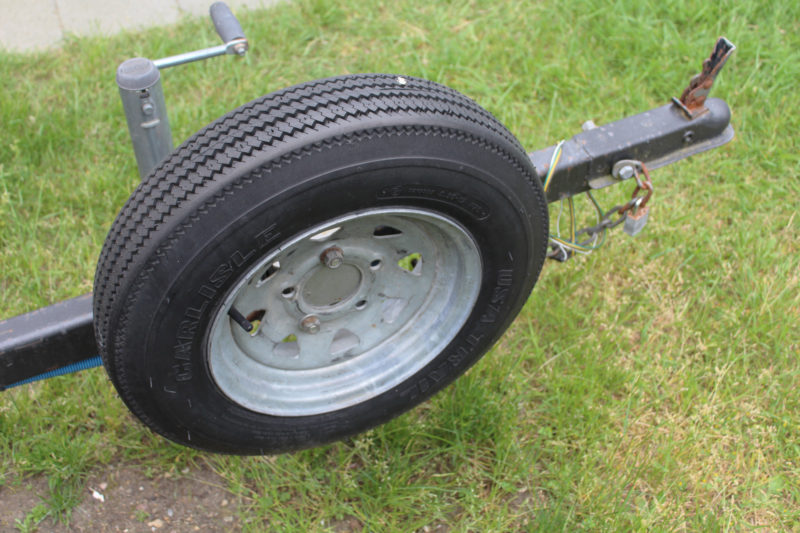 SBM photograph
SBM photographThis trailer’s spare tire looks brand new—it still has all of the little rubber “hairs” left by the the mold that created it—but the codes molded into the sidewall indicate it is 16 years old. It needs to be replaced.
It’s easy to take trailer tires for granted—they don’t log many miles and don’t usually show much wear—but they deserve more attention than a glance to see if they look like they have enough air in them.
Imprinted on every tire is a lot of useful information on its size, type, load range, pressure, and date of manufacture. All trailer tires are marked with ST—Special Trailer— and they are not at all like vehicle tires. Trailer tires have strengthened sidewalls that keep the trailer from swaying in turns and allow them to carry the often very heavy combined weight of trailer and its load.
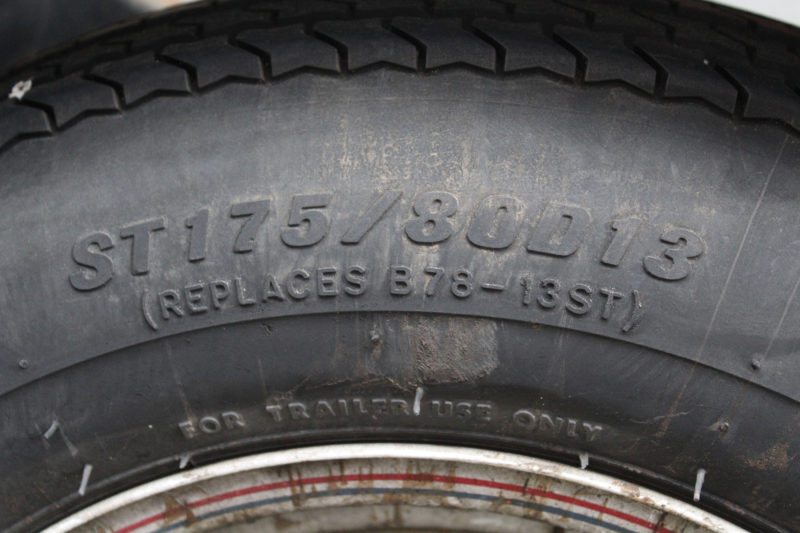 SBM photograph
SBM photographLike all trailer tires, this tire is marked ST for Special Trailer. It is 175mm (6.9”) wide at its widest point and 80% as tall, 140mm (5.5”), from wheel rim to tread. It has diagonal fiber plies—D—and fits a 13” rim.
In the string of numbers indicating the size of the tire, there is a letter—B or R—for bias or radial plies. You may also see a D for diagonal, but its construction is the same as a bias-ply tire. For short trips, bias-ply tires are suitable; our trailer guru Eddie recommends radial tires for long road trips—they can carry more weight and don’t generate as much heat.
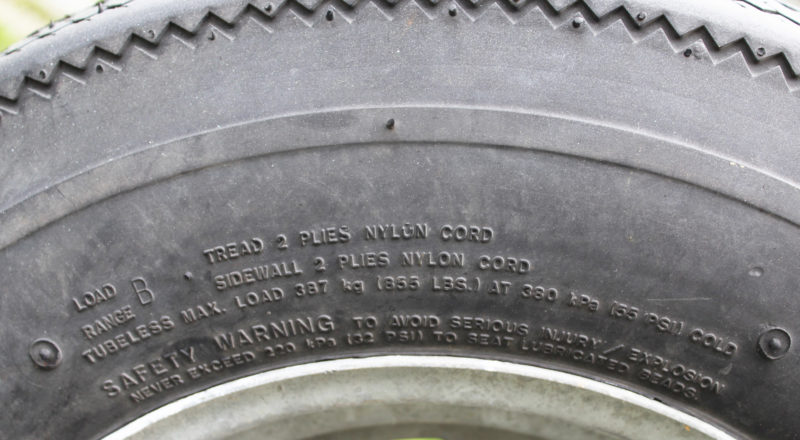 SBM photograph
SBM photographThis Load Range B tire gives the actual number of tread and sidewall plies instead of the cotton-ply equivalent. The text also provides a maximum load (per tire) of 855 lbs and a maximum cold inflation pressure of 55 PSI. The maximum pressure should be used even if the load carried is less than the maximum weight (per tire)indicated.
A load range is designated in letters B through F. The letters indicate a ply rating based on the number of plies, from 4 to 12, when they were made of cotton. Today’s tires are made of stronger fibers, usually nylon, and they achieve the same rating with fewer plies. A tire with a higher load rating will have stronger sidewalls, carry a heavier load, and run cooler. Most trailers have B or C. While the letters are an indication of how much weight a tire can carry and its maximum inflation pressure, you can find the weight and the pressure indicated in smaller print on the sidewall.
Because trailer tires have very stiff sidewalls, they may not appear to need air as your vehicle’s tires do; for the most accurate reading, use a gauge and take the pressure of the tires while cold. It is important to keep tires inflated to the maximum pressure indicated on the sidewall, even if the load on the tire (weight of the trailer, boat, and gear divided by the number of tires) is less than the maximum load indicated. This minimizes sidewall flexing, which in turn reduces the heat buildup that can lead to its failure. On a hot day or after the tires have warmed up on the highway, the pressure will rise by only 2 percent for every 10 degrees and the tires are built to accommodate that extra pressure. Don’t lose the valve-stem cap while you’re checking the pressure or inflating the tire—it protects the valve core from grit that will cause it to leak.
While car tires will also have ratings for speed, the U.S. Department of Transportation (DOT) tests and rates all ST tires (with rare exceptions) for 65 mph, close to maximum speed on our modern highways. With a trailer in tow, we drive a little slower and load extra gear in the tow vehicle instead of in the boat.
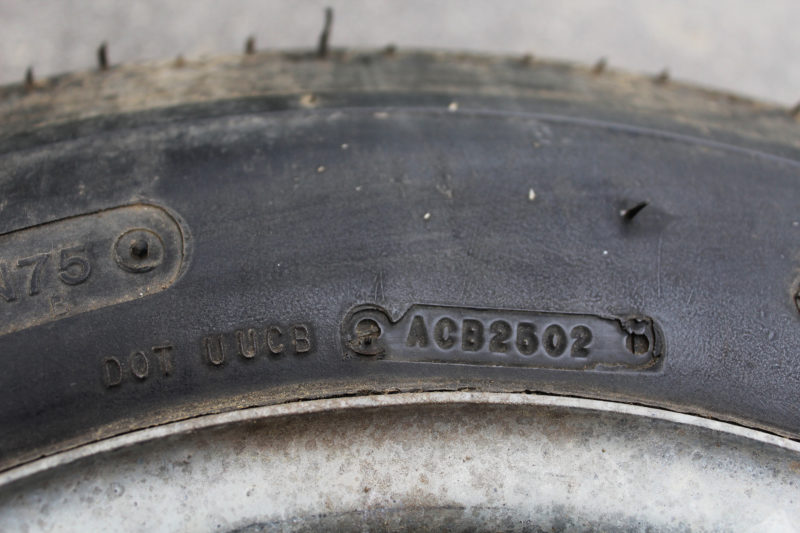 SBM photograph
SBM photographOf all the letters and numbers in the Department of Transportation (DOT) code, the last four are the most important. Here, “2502” indicates the tire was manufactured in the 25th week of 2002.
On the side of the tire there is a four-digit number that indicates when the tire was made, with the first two numbers being the week of the year and the last two numbers being the year. Age is both the most important aspect of tire safety and perhaps the most overlooked. A tire may have plenty of tread, but that doesn’t help us determine how much life it has left. Tires age with exposure to air—rubber oxidizes and loses flexibility, even as a tire sits unused. UV rays from the sun and moisture from ground will accelerate the degradation. While you can’t prevent the aging, you slow it by covering the tires and parking the trailer on a paved driveway or on concrete pavers or planks set on soil.
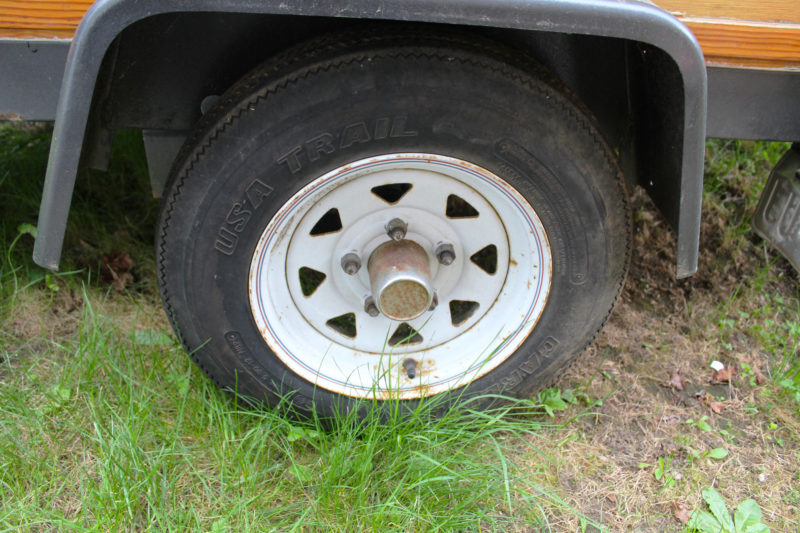 SBM photograph
SBM photographIf the only spot you have for your trailer is in the back yard, roll the tires up on concrete pavers to keep the moisture in the grass and soil from hastening the degradation of the rubber.
Most trailer tires will age out long before they wear out. Our trailer guru Eddie recommends replacing tires around the five-year mark; studies by the National Highway Traffic Safety Administration indicate tires are no longer safe once they reach six years.
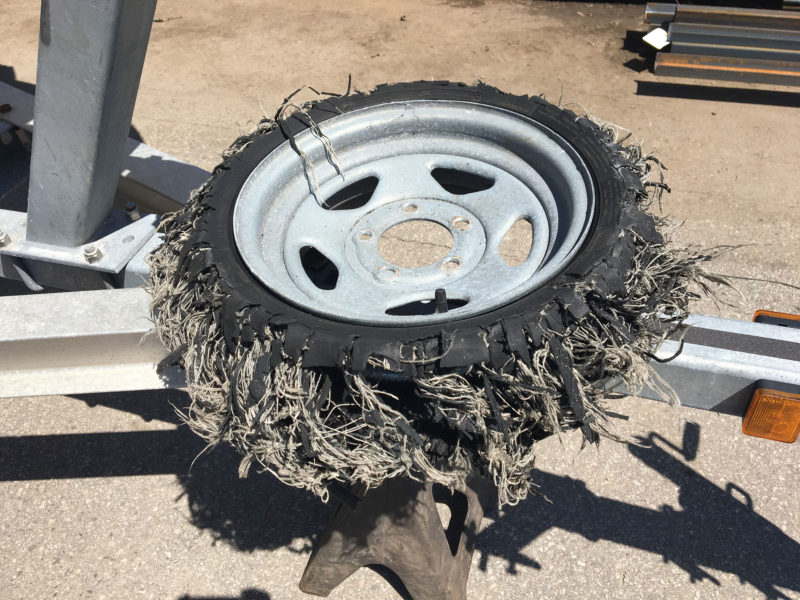 Kent and Audrey Lewis
Kent and Audrey LewisThis tire was one of 3 on a dual-axle trailer that went south in a hurry. Fortunately, the boat survived and the failure of the tires didn’t lead to an accident. The tires were 14 years old.
When you buy new tires, they should be the same size as those that were installed by the manufacturer. If you bought the trailer used, don’t assume that its tires are the right ones, a previous owner may have put on cheaper tires to save money.
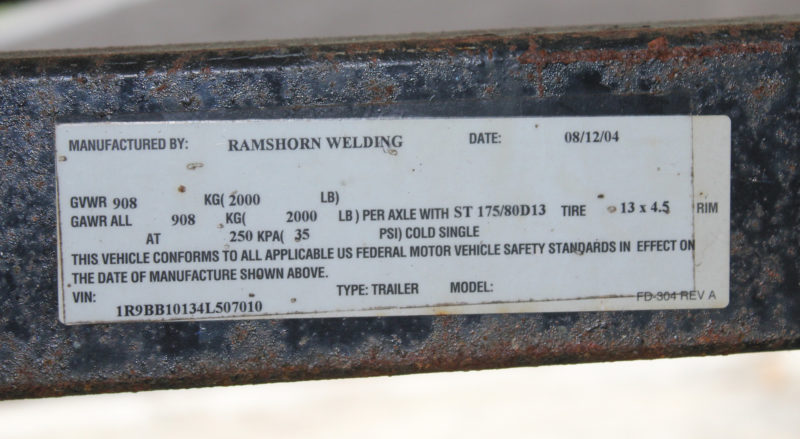 SBM photograph
SBM photographThe label on the trailer will note, among other things, the recommended tire size. This trailer takes ST 175/80D13 tires.
Check your trailer’s loading decal or consult the manufacturer. If you have tires with a B load rating, consider upgrading to C. And before you have the new tires installed, check their date code to make sure that they actually are new.
It’s easy to take tires for granted, but if we take care of them, they’ll take care of our trailers and our boats.![]()
Lewis family trailers have seen the Gulf, Pacific, Atlantic, and the Great Lakes. The longest pull was 1,449 miles from Corpus Christi, Texas, to Oceanside, California, with our Drascombe Lugger. The current fleet of five trailers carries boats ranging from 130 to 900 lbs.
You can share your tricks of the trade with other Small Boats Monthly readers by sending us an email.


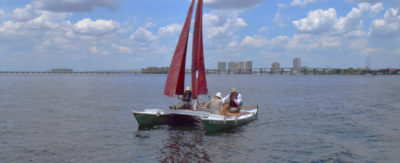

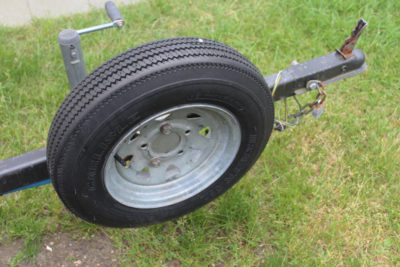
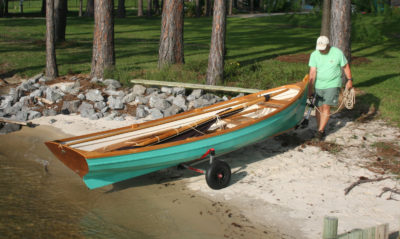
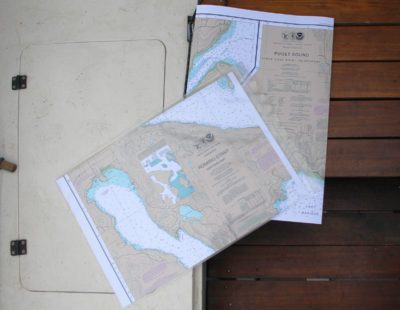
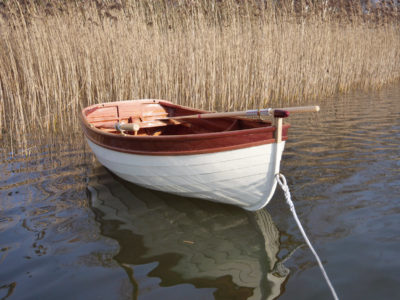
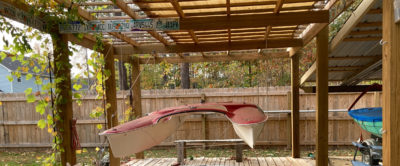
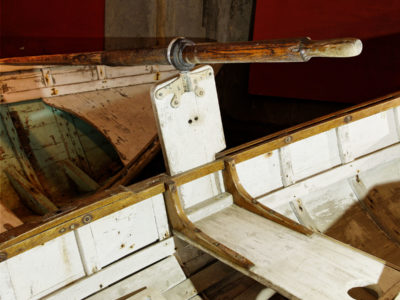
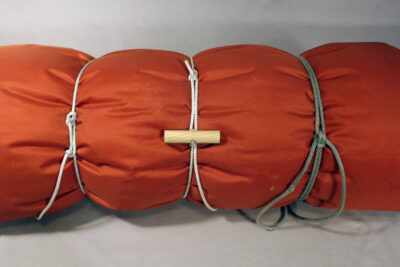
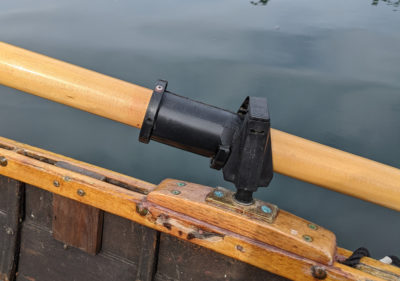
Some very useful information here. Thanks.
I have usually raised my trailers (with boats on) on small jack stands between uses. Will that allow me much beyond 6 years of use?
Tires can develop flat spots when they’re parked for long periods of time, especially if it’s cold. That may result in a bit of a bumpy ride until the tire warms up. Low profile and high-speed car tires are prone to flat-spotting, as it’s called in the tire industry, but trailer tires aren’t likely to be seriously affected by it.
Tire aging occurs with exposure to the environment and the air pumped into it, and will affect even a tire that has been attached to the trailer as a spare and has never touched pavement.
Christopher Cunningham, Editor
There is no such thing as an “expiration date” on tires. There are two main factors that ruin tires. The first with things like campers and RV’s is sitting with the tires low on air. The tires will crack between the tread and at the sidewall at the very bottom where the weight is. This of course also occurs with cars that sit for extended periods of time. The second is something that isn’t talked about, because most “guru’s” have no clue about the technical aspects of tires. Tire rubber is a synthetic compound, made with oil as a component. The more oil that is used, the more it costs, and the longer they last till they dry rot. Since domestic manufacturers are union and have high legacy costs, they have cut oil. Ever seen a 2-year-old Goodyear or Michelin car tire that was badly dry rotted? I’ve seen a lot of them. Chinese tires are actually lasting longer (dry-rot wise). If you run heavy loads, and wear out your tread, buy a high-quality tire. If your tires dry rot away because they sit, buy a cheap tire and keep a spare. You will find the cheap tires will last (dry-rot wise) multiple times longer. Qualifications: I have two ASE master certifications, and owned/operated an auto repair business for years.
Thanks, Chris. Like Burtt, I found this particular article very informative.
Thanks for this. Useful information and a good reminder about this often overlooked aspect of boating.
Another item for the trailer maintenance list are the wheel bearings.
They aren’t expensive to replace, but only if you do it in time.